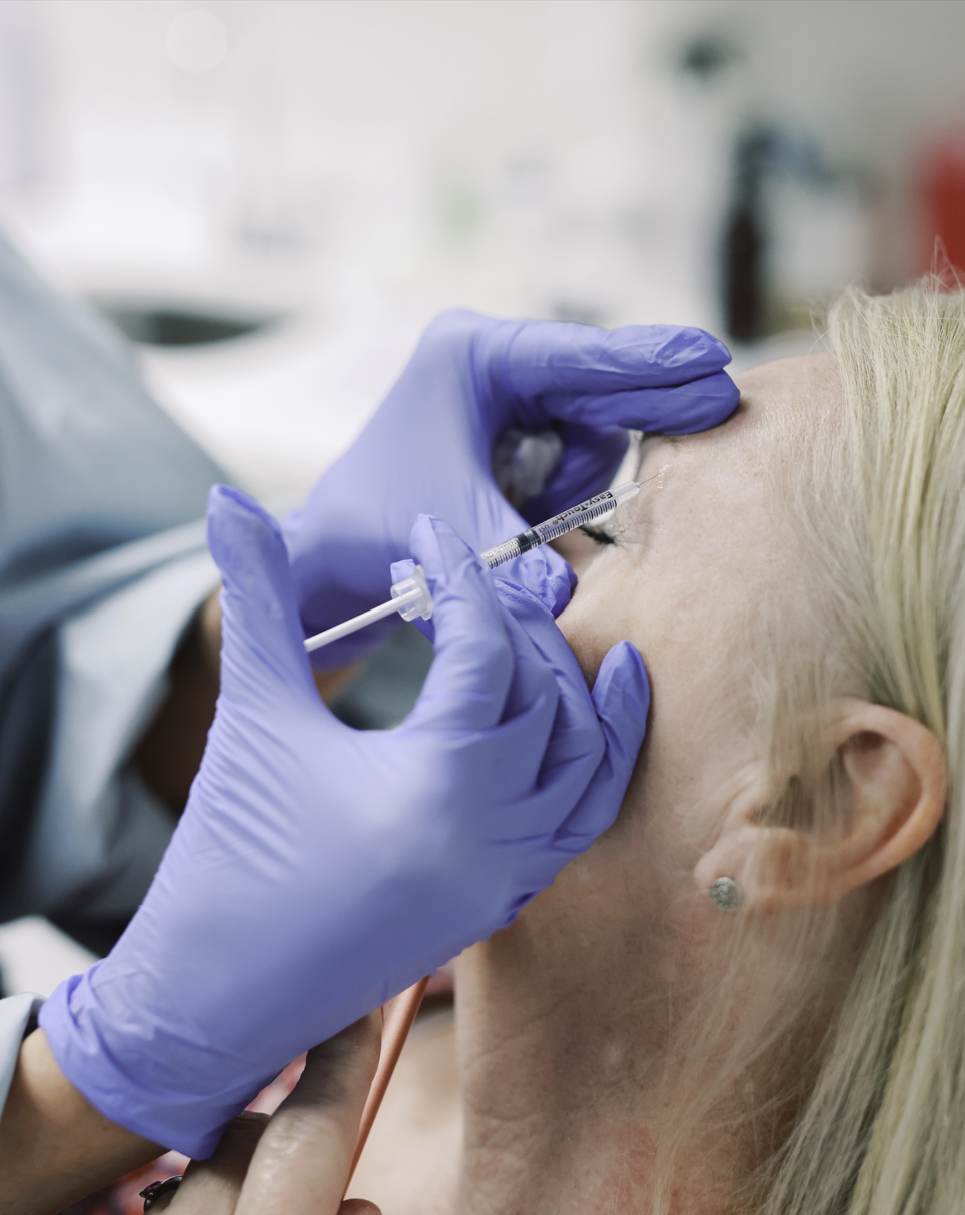
Medically reviewed by Rachael Taylor, PA-C
In the world of aesthetics, wrinkle-relaxing injections are among the most popular treatments—and for good reason. Quick, effective, and with minimal downtime, neuromodulators like Botox and Dysport help smooth fine lines and restore a refreshed, youthful appearance.
If you’re considering this treatment, you’ve likely heard both names—but what exactly is the difference between Botox and Dysport? And which one is right for you? Let’s break it down.
Both Botox and Dysport are FDA-approved neuromodulators made from botulinum toxin type A. They work by temporarily relaxing the muscles that cause expression lines—such as frown lines, forehead lines, and crow’s feet—giving your skin a smoother appearance.
While they have the same core ingredient, they’re manufactured differently, and those subtle differences can impact how they perform.
If you’re looking for quicker results (perhaps for an event or trip), Dysport may offer an advantage. It’s recommended to give each neurotoxin up to 14 days for it to fully settle before judging if an adjustment is needed.
This means Dysport may be better for larger treatment areas like the forehead, while Botox may be preferred for smaller, targeted zones. A skilled injector can adjust technique to use these interchangeably, though in certain cases, one may be preferred by the injector to achieve a specific outcome.
It’s not about which one uses “more”—it’s about customizing the right treatment plan for you.
Your personal experience may vary depending on your metabolism, treatment area, and muscle strength.
If you’re curious about the cost of Botox or Dysport in North Carolina, you’re not alone—it’s one of the most common questions we get! On average, neurotoxin injections in NC typically range from $11 to $16 per unit, and most full treatments depend on how many units you need and where you're treated.
But here’s the thing—price isn’t everything. While it might be tempting to shop around for the best deal, it's so important to remember that not all injectors are created equal. Cheap tox isn’t always good tox. Choosing someone with the right training, experience, and aesthetic eye makes a huge difference in your results (and your safety!). Always do your research and don’t be afraid to ask questions—your face is worth it.
Neurotoxin treatments like Botox and Dysport are most often used to smooth expression lines in areas where our faces move the most—think forehead lines, the “11s” between the brows, and crow’s feet around the eyes. These are some of the most popular treatment zones because they’re usually the first places where fine lines become noticeable. Depending on your muscle strength and movement, these areas typically require anywhere from 10 to 30 units.
But tox isn’t just for wrinkles. It can also be used in some pretty surprising ways! Many people love it for slimming the jawline by relaxing the masseter muscles, softening chin dimpling, giving a subtle brow lift, or treating a gummy smile. It’s also commonly used to reduce excessive sweating in the underarms, hands, or feet. Therapeutically, tox can help relieve jaw pain from TMJ by relaxing the overworked masseter muscles, and it’s gaining popularity for easing tightness and pain in the shoulders (trap tox), which can also give the neck a longer, more elegant look. These more specialized treatments require a skilled injector who can tailor the dose and placement to your unique anatomy and goals. That’s why we always begin with a personalized consultation—no two faces are the same, and your tox plan shouldn’t be either.
The truth is, both are excellent choices. The best option often comes down to:
At Medical Day Spa of Chapel Hill, our experienced injectors will guide you through a personalized consultation to determine which product is the better fit for you. Whether you're a first-timer or a seasoned patient, our goal is always to deliver natural-looking, beautiful results. There are other things on the market, but these have held up with research and standards. However, we are always looking at the new neurotoxins hitting the market!
If you're considering Botox or Dysport and want expert advice tailored to your needs, we’d love to help. Book a consultation at Medical Day Spa of Chapel Hill, and let’s create a treatment plan that works for you.